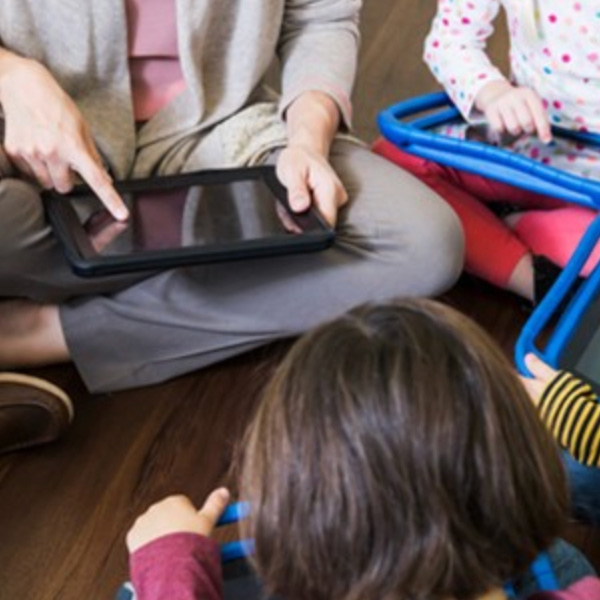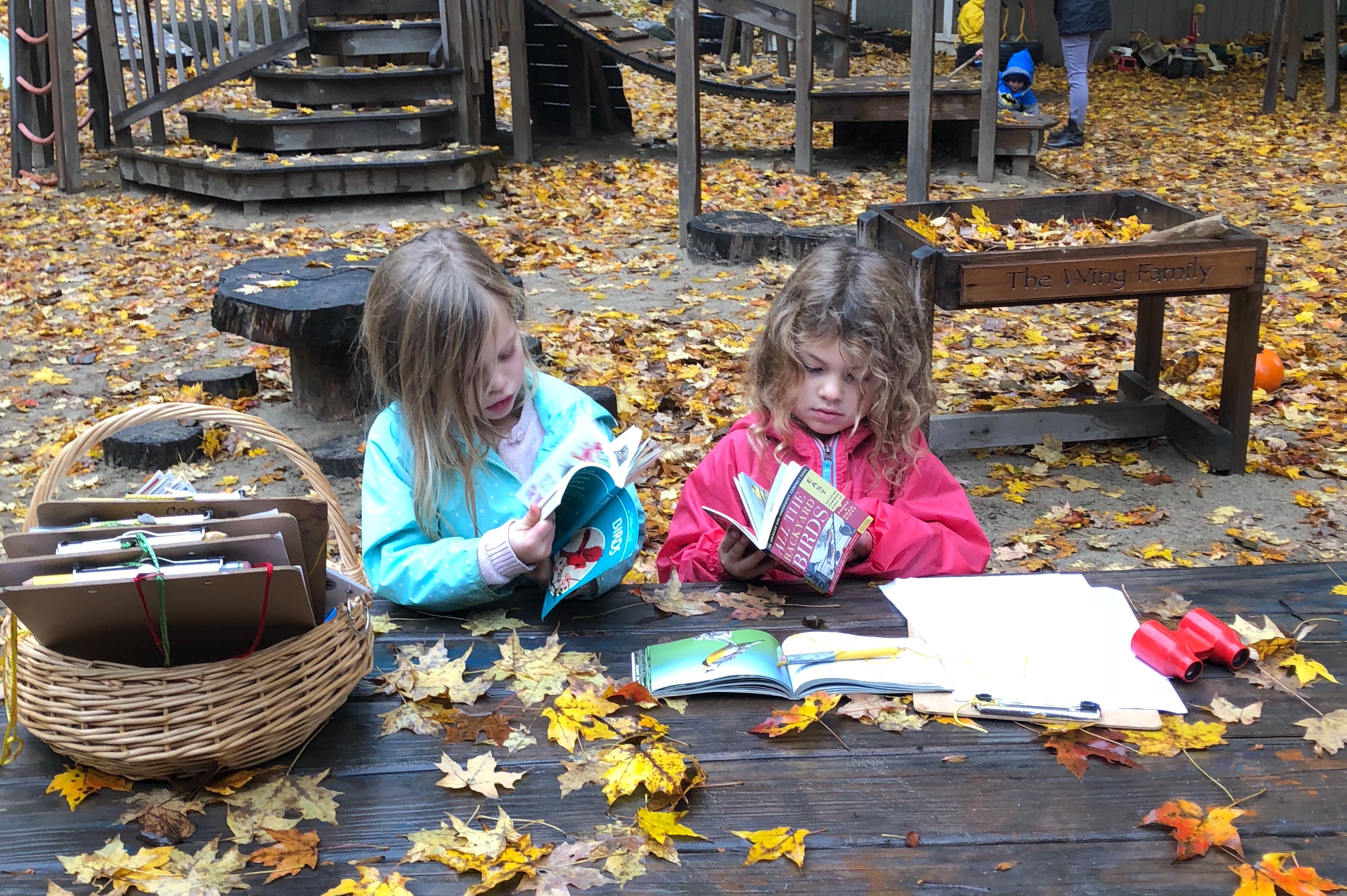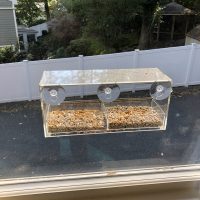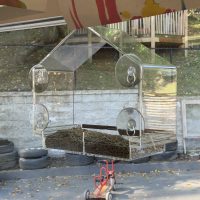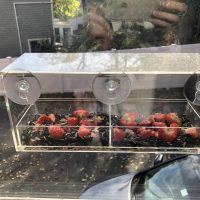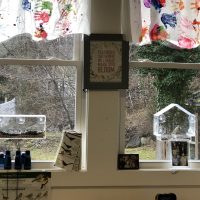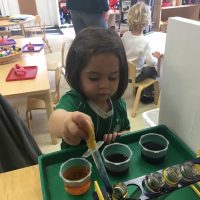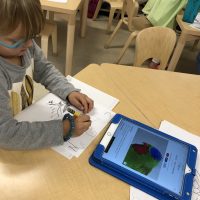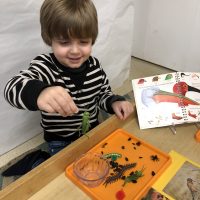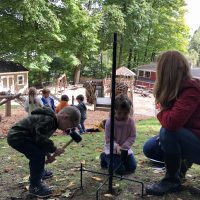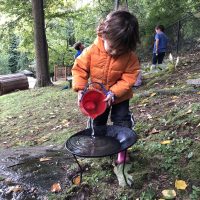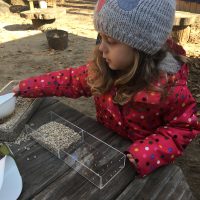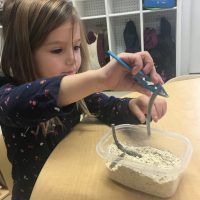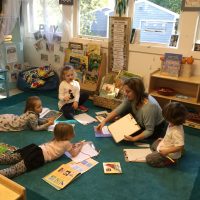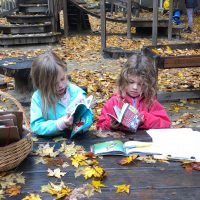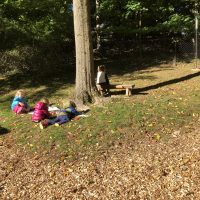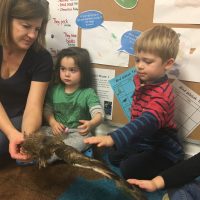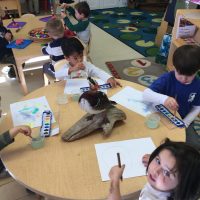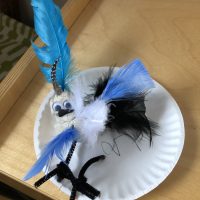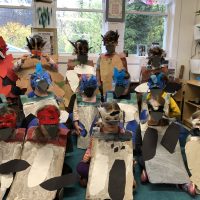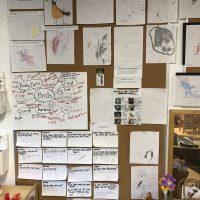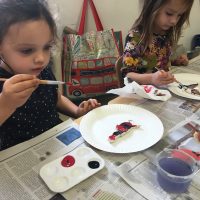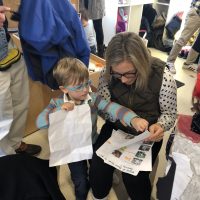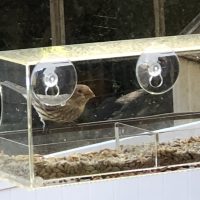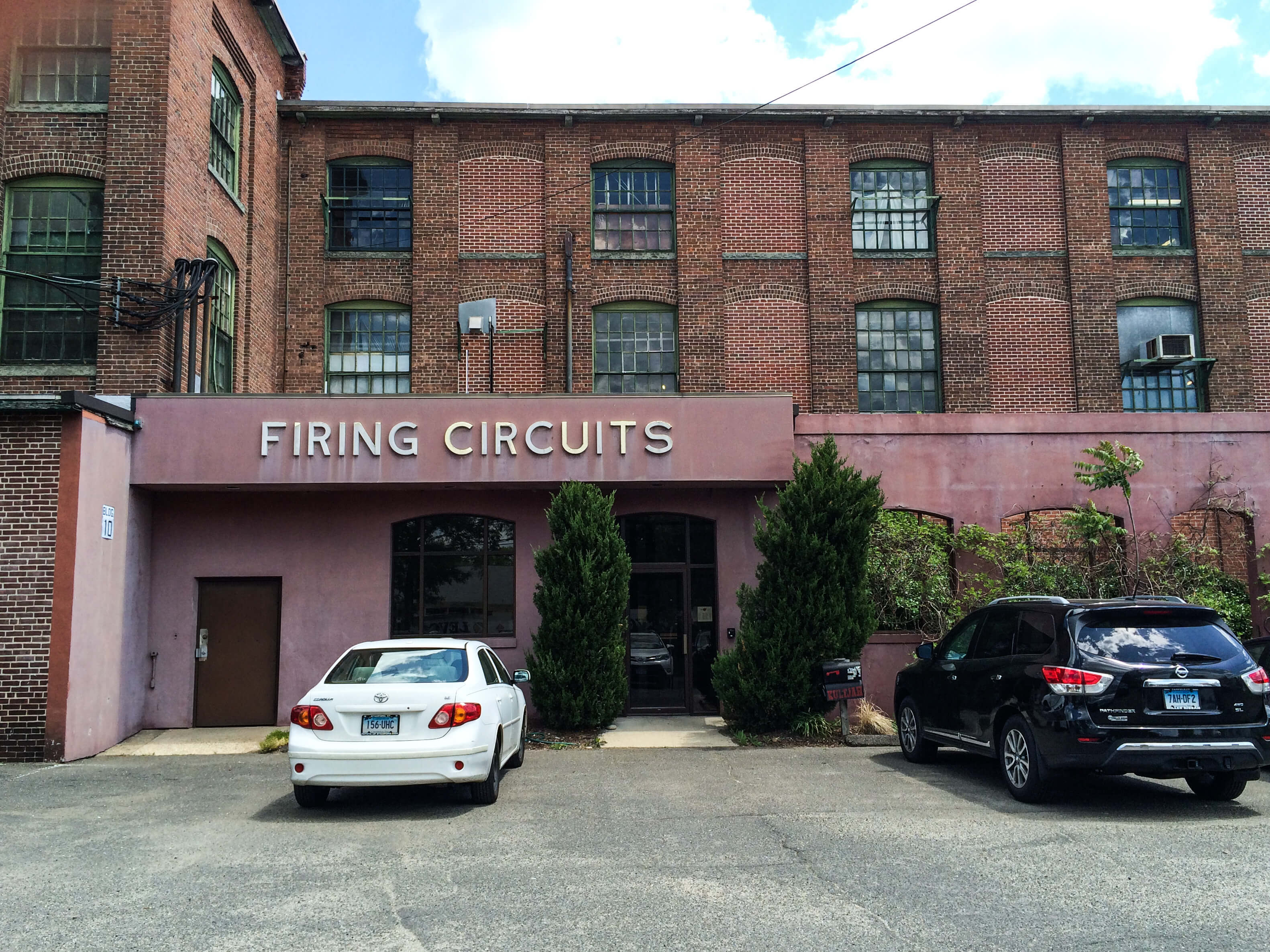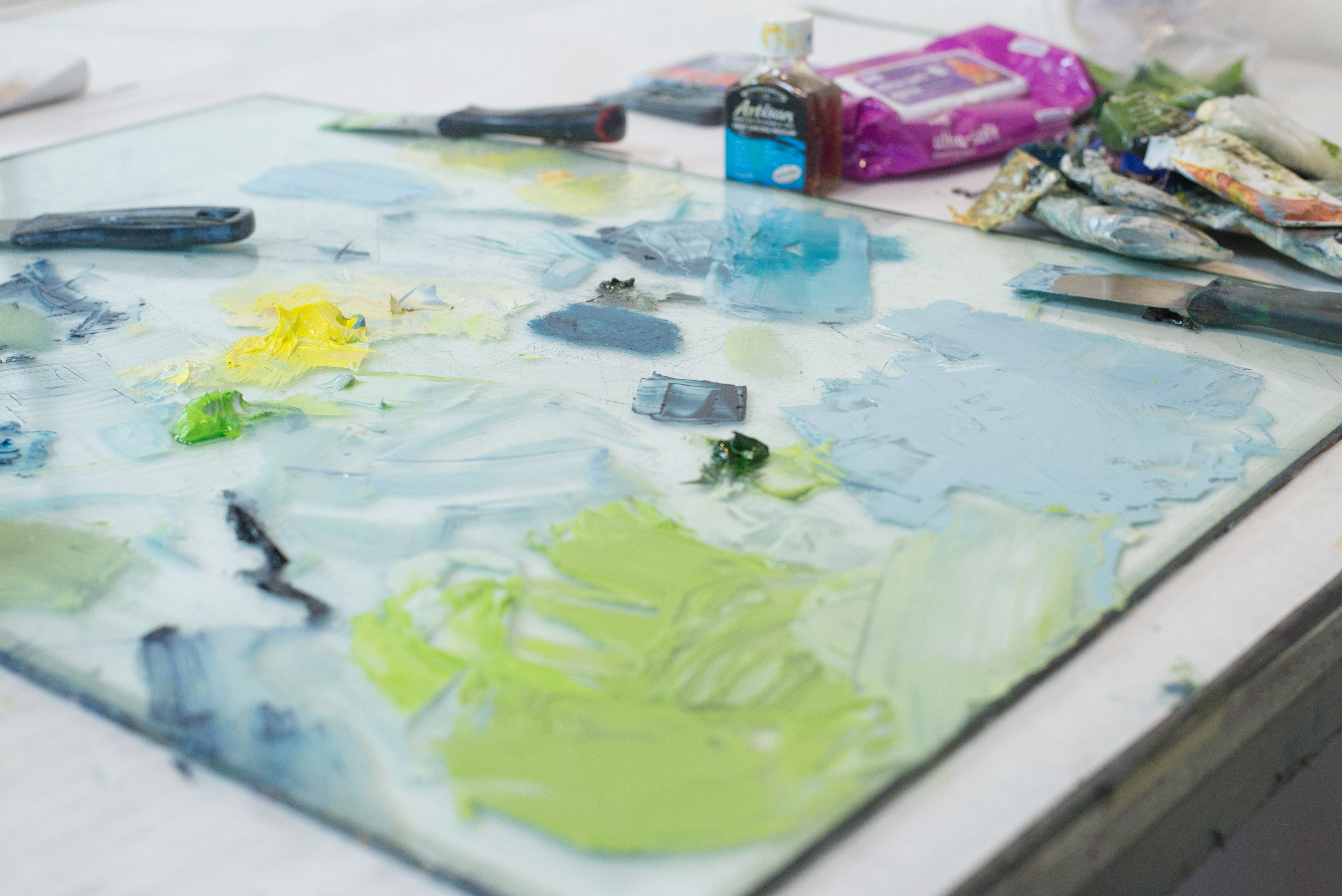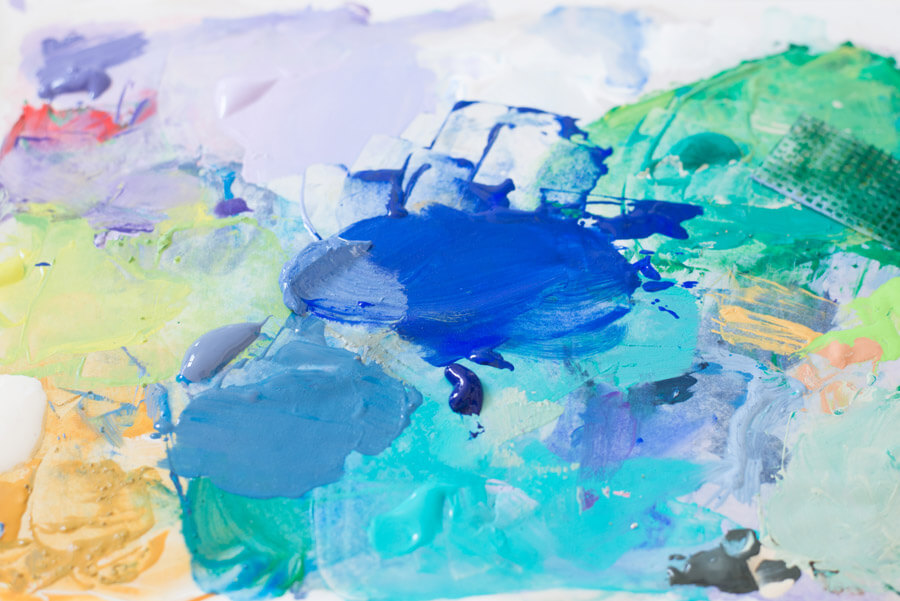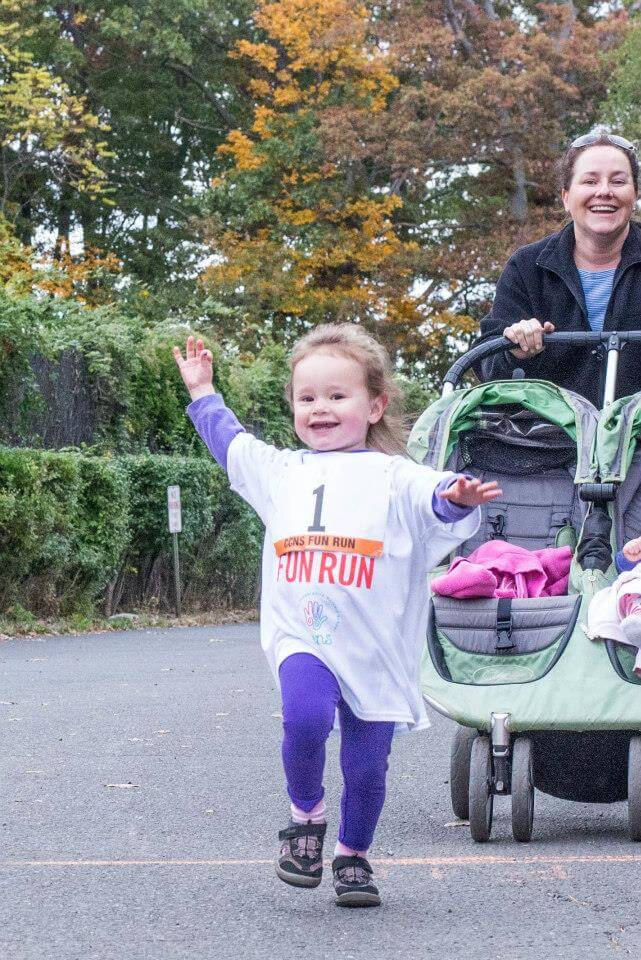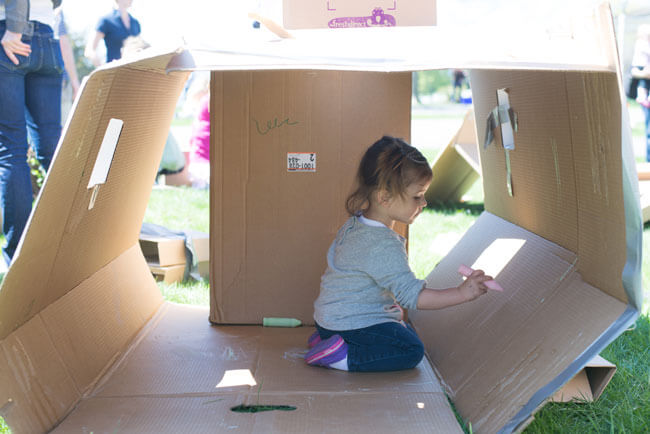Join Us for a Thoughtful Parent Workshop with Lauren Parsio, MA, LPC Wednesday, April 23rd at 7:30 PM at CCNS
Continue readingJoin Us for The Kindergarten Journey Workshop at CCNS
At CCNS, we understand that the transition from preschool to Kindergarten is a significant milestone for both children and their families.
Continue readingThe Birds of CCNS-The Project Approach in Action!
If you walk onto the grounds of CCNS you’ll be delighted to be surrounded by the calls and colors of doves, blue jays, sparrows, and chickadees yet their presence is by no accident. Rather, the return of CCNS’s abundant bird population is due to the interest and work of our students, particularly the threes and fours classes. How and why did so many species of birds decide to return home? Read on to learn about one example of the great rewards of The Project Approach.
A project is a deep study of a topic worth learning more about and is one of the ways we deliver curriculum at CCNS. The Project Approach follows three distinctive phases beginning with the impetus for the project itself.
Phase I: Initiating the Project
Although the Threes and Fours classes studied the same topic for their deep study, it started for two very difference reasons. The Three Class have a class “animal” that differs each year that they use for their attendance tags. This year their tags are birds. Starting the year off there were bird’s nests and stuffed birds and many beautiful non-fiction books on birds in the classroom as provocations. One of their classmates also raises chickens at her home and she and her mom shared their care and their eggs with the class. The children became interested in learning more about the real creatures based on playing with the toys and observing the nests. The Fours Class had two new window bird feeders hung up at eye level in the meeting area full of inviting bird seed. Watching them eagerly they became dismayed after a month of not seeing a single bird at their feeders. Going on a bird watching walk around the grounds revealed a similar fate-they did not see a single bird! Now they were determined to bring the birds back to CCNS.
Phase II: Developing the Project
CCNS has a wonderful relationship with the Darien Nature Center, so both classes worked with their naturalist, Emily. The cornerstone of any project is the questions from the children. Learning how to ask questions and then how to find answers is the real meat of the project and what increases mind brain capacity in children. The Three’s questions focused on the unique body features of birds, while the Four’s were more interested in why they couldn’t see any birds at their school. Emily visited the Threes class and brought some live birds and artifacts with her. They especially liked drawing sketches of the woodland duck she let CCNS borrow to keep in the classrooms for several weeks. The Fours took a trip to the Darien Nature Center to see the birds inside and outside the center and ask their questions. There they noticed several free-standing bird feeders full of active birds, inciting the next phase of their project. Both classes got busy making bird feeders of various kinds to hang around the school, and the Fours invited the owner of Wild Birds Unlimited, Joe, to come to CCNS to give advice on attracting birds to our feeders. Joe helped the Fours class select a bird feeder and all the necessary supplies based on the birds that would be native to our area. The children installed and filled the feeder themselves as well as changed the seeds in their window feeders, even adding dried worms. To the great excitement and sheer joy of all the teachers, parents and children the birds returned to CCNS!! This allowed both the Threes and Fours classes to work together observing, identifying and sharing information about the birds that flocked to our outdoor classroom and each window feeder. They became ornithologists! The Threes class researched and experimented with how the beaks of various birds worked, while the Fours class students each chose a specific bird they had observed and researched its features, food choices and size. They also made costumes based on what they had learned.
Phase III: The Culminating Event
Celebrating learning is a major component of The Project Approach. The Fours became additional experts for the Threes class going in to share what they had learned about each bird with the Threes having time to ask these “experts” questions. They also shared their findings with the Twos class and their own families visited the class to hear their presentations. The Threes class cut out bird shapes from clay and then used their research from photographs and books to paint them with authentic colors and markings to match the bird each clay piece represented.
In true CCNS fashion, the project became a community event with the children in different classes working together, as well as the parents becoming just as excited about seeing the birds back on our playground as the children. Parents shared their knowledge such as with the chickens, their resources by sending in relevant books from home and shared photos of bird sightings around town. The projects have officially come to an end, but the feeders are in place, and being filled just about every three days now that we have hungry doves, woodpeckers, house finches, sparrows, chickadees, blue jays, cardinals and tufted tit mice as regular guests. We even have a very hungry and determined squirrel who has discovered our feeders…perhaps our next project.
Firing Circuits: A Reclaimed Factory Becomes an Inspired Studio Space for Dozens of Artists
[vc_row][vc_column width=”2/3″][vc_gallery type=”flexslider_fade” interval=”3″ images=”787,788,789,790,791,792,793,794,796,795″ onclick=”link_image” custom_links_target=”_self” img_size=”full”][/vc_column][vc_column width=”1/3″][vc_column_text disable_pattern=”true” align=”left” margin_bottom=”0″]Our marketing committee recently had the opportunity to visit Firing Circuits Studios where CCNS Art Show favorites, Mari Gyorgey and Susan Leggitt both have studios. Firing Circuits is located in a multistory brick building, which was the former home of the Dresden Lace Works and then an electronics components manufacturer named … Firing Circuits. Mari’s and Susan’s studios are located on the spacious third floor of the building, which includes lofted ceilings; exposed brick walls, vents and pipes; and beautiful, old paned windows. Take a peek at their studios with us, and come check out Mari’s and Susan’s artwork on June 4-7, 2015.[/vc_column_text][/vc_column][/vc_row]
Learning The Finer Points of Fine Art Printmaking With Betty Ball and Jane Cooper
[vc_row][vc_column][vc_column_text]Within the 19th century, former carriage house of the Lockwood Mathews mansion in Norwalk resides the Center for Contemporary Printmaking (CCP), which was founded in 1995 as a non-profit organization dedicated to supporting fine art printmaking, including lithography, monotype, silk screen, and several other printing techniques.
Members of the CCP have participated in the CCNS Art Show & Sale throughout the years, and this year’s show includes two fine art printmakers who are “key holding” members of the CCP, Betty Ball and Jane Cooper. I recently had the great pleasure of meeting with Betty and Jane at the CCP where I received a tour of the facility, observed an ongoing Norwalk Community College class, picked up a lithostone (there is seriously no reason for a lithographer to join a gym … ever), learned about Betty’s and Jane’s creative processes, and was even put to work pressing one of Jane’s prints!
What I learned during my visit to the CCP is that there is much more than meets the eye when it comes to creating a fine art print. Fine art printmaking is the creation of an original artwork using whatever medium and materials the artist chooses, and most definitely should not be confused with a print or reproduction (these days often done by giclee printing) of an original artwork. Both Betty and Jane create monotypes and monoprints, which involve the transfer of ink or paint from a plate to a paper or canvas often with the assistance of a press. To sound like a true aficionado, here are some key terms that you should know:
- Monotype – A monotype is essentially a printed painting and is created by transferring ink or paint from a clean, unetched plate to paper or canvas. Betty and Jane use oil-based paints that they apply to plates using brushes, cotton swabs, brayers … any number of items.
- Monoprint – A monoprint is the same as a monotype except that it will reflect a pattern or part of an image that is part of the plate. In creating a monoprint, the plate is not clean but etched or has some kind of pattern such as lace or leaves, which will always be reflected in a print created with that plate.
- Ghost Image – Generally, almost all of the ink or paint is transferred from the plate to the paper or canvas; however, some artists create a ghost image of the original print by pressing another piece of paper or canvass with the same plate without re-inking or re-painting.
- Chine colle – Chine collie is a method in which thinner paper is bonded to heavier paper before ink or paint is pressed onto the papers. This method can add texture, color or depth to a print.
Be sure to stop by the CCNS Art Show & Sale June 4-7 to see some of the beautiful fine art prints created by Betty and Jane![/vc_column_text][/vc_column][/vc_row][vc_row][vc_column width=”1/1″][vc_gallery type=”flexslider_fade” interval=”3″ images=”776,777,780,779,778,781″ onclick=”link_image” custom_links_target=”_self” img_size=”full”][/vc_column][/vc_row]
Art in Design Tips From Lillian August Designer Meighan Morrison
[vc_row][vc_column width=”2/3″][vc_column_text disable_pattern=”true” align=”left” margin_bottom=”0″]In advance of this year’s Art Show (June 4-7) Meighan Morrison, Lillian August interior designer, offers some tips on displaying artwork in your home.
1) DON’T “HANG ‘EM HIGH”
Invite your art to join you! People have a tendency to hang art too high in an interior space. Art should be a connected element in and of the vignette you are creating whether it be hung over a sofa or over a console, etc. Just a few inches over the sofa is fine… don’t worry if there is much more space above the art than below it. In short, instead of plunking art in the middle of the wall space, hug it to the rest of your design.
2) BE BOLD AND EMBRACE THE NEGATIVE
There is a tendency to want to evenly space out pieces of art throughout the available wall space of a room or home, much as one would evenly space out uniform pats of butter on top of a pie. This may result in a nice pie but does not usually result in a very interesting or dynamic interior space. Instead, play with scale and placement. Hanging one really large, impactful piece in a room and perhaps some secondary walls left empty is going to be more interesting than several similarly sized pieces equally spaced around the room. This follows the rule (both in art as well as interiors) that the negative space is as important as the positive space.
3) FORM A TIGHT-KNIT GROUP
As an alternative to a single large piece of art, diptychs and triptyches are fun and effective. If you have a collection of smaller artworks, try grouping them together to create one large presentation – either spaced evenly (for example, 3 neatly spaced rows of 5 same-sized photographs) or a randomly spaced grouping of art of different sizes. Either way, if you keep your grouping fairly tight, you will create a gallery wall that will carry similar impact to hanging one very large piece of art.
4) MIX IT UP
Instead of hanging traditional looking art in a traditional interior, consider choosing something graphic and modern – contemporary looking art juxtaposed against more traditional decor and/or architecture will instantly freshen a space and give it a more current look. On the flip side, an ornate frame and/or traditional painting in a clean, contemporary space can be just the tweak needed to add a spark of warmth and character to a space that might otherwise have felt a bit cold and austere.
5) DON’T JUDGE THE ART BY THE FRAME
Don’t fall in love with the just the fancy wrapping paper but the actual gift itself! It is easy to get enamored with an expensive or trendy looking frame when purchasing art…. or to overlook a beautiful piece of art because it is unframed or doesn’t actually need a frame or is wearing the wrong frame. Be sure it is the ART that you are connecting with. Frames are to art what accessories are to the dress: easy to change but quick to make or break the look.
Whether you choose a signature piece of original art by a well-known painter or an interesting piece from an emerging talent, fill your space and life with artwork that speaks to you. Local galleries or exhibits like this year’s CCNS Art Show & Sale (June 4-7 in Rowayton) are great places to find inspiration and that next interesting piece of art that will help you create a beautiful space.[/vc_column_text][/vc_column][vc_column width=”1/3″][vc_gallery type=”flexslider_fade” interval=”3″ images=”729,730,723″ onclick=”link_image” custom_links_target=”_self” img_size=”full”][/vc_column][/vc_row]
A Visit To The Aptly Named “The Art Studio” in Westport
[vc_row][vc_column width=”2/3″][vc_column_text]Tucked between Peachwave and the Gym Source on Post Road in Westport is The Art Studio Connecticut, a collaborative workspace for eight Fairfield County artists. Over the past several years, the CCNS Art Show & Sale has included works from members of The Art Studio, including its founder Helen Werngren.
This year, we are once again happy to have participating in this year’s show artists from The Art Studio. Katherine Evans, whose abstract paintings reflect complex color combinations, will be participating again. And, we are excited to have abstract landscape painter, Malu Tan, join the show for the first time this year.
Members of our marketing committee (aka CCNS parents) recently had the pleasure of visiting The Art Studio, speaking with Katherine and Malu, and getting a peek at some of the pieces that they will be submitting to the show.
The Art Studio, which is located on the second floor, is a bright, airy loft space. Each of the artists has their own area or space with which to paint and create. Take a look inside:
Katherine, who is trained as a graphic designer, started painting about eight years ago. Her sometimes rather large abstract paintings reflect rich, colorful palettes. She has won multiple awards; exhibits her work throughout Fairfield County as well as through Saatchi Art, an online exhibition; and has sold her pieces to collectors around the world.
Malu began pursuing her passion as an artist while her family was living in London several years ago. Her abstract landscape paintings reflect what she sees as layers of color when viewing the natural world from a much broader perspective, and she sometimes incorporates other materials, such as sand, to give her pieces depth and dimension. She also exhibits her works throughout Fairfield County and through Saatchi Art.
Many thanks to Katherine and Malu for allowing us a tour of the studio. To see more representations of Katherine’s work, check out her website at kevansart.com, and to see more representations of Malu’s work, check out her website at malutanart.com.
Come check out Katherine’s and Malu’s works June 4-7, 2015.[/vc_column_text][/vc_column][vc_column width=”1/3″][vc_gallery type=”flexslider_fade” interval=”3″ images=”680,681,682,683,684,685,686,687″ onclick=”link_image” custom_links_target=”_self” img_size=”full”][/vc_column][/vc_row][vc_row][vc_column width=”1/1″][/vc_column][/vc_row]
HOW THE ART SHOW BEGAN
CCNS first opened in a private home in the Village Creek section of South Norwalk in 1953. The current “little red schoolhouse” was built in the late 1960s, and CCNS proudly remains today as one of the few cooperative preschools in Connecticut.
Continue readingTHE STORY BEHIND THE FUN RUN AND FAMILY DAY
The CCNS Fun Run and Family Day was created by a group of parents who truly believe in fitness, health, and involving the whole family in a healthy lifestyle. CCNS really believes in families playing together, so the creators of this event thought this was the perfect complement to that mission.
Continue readingPLAY OUTSIDE!
On Saturday, May 2, 2015 we celebrated National Play Outside Day with our friends and neighbors in Pinkney Park in Rowayton. We had an incredible morning using our imaginations and hundreds of boxes of all shapes and sizes to build, explore, and create.
Continue reading
